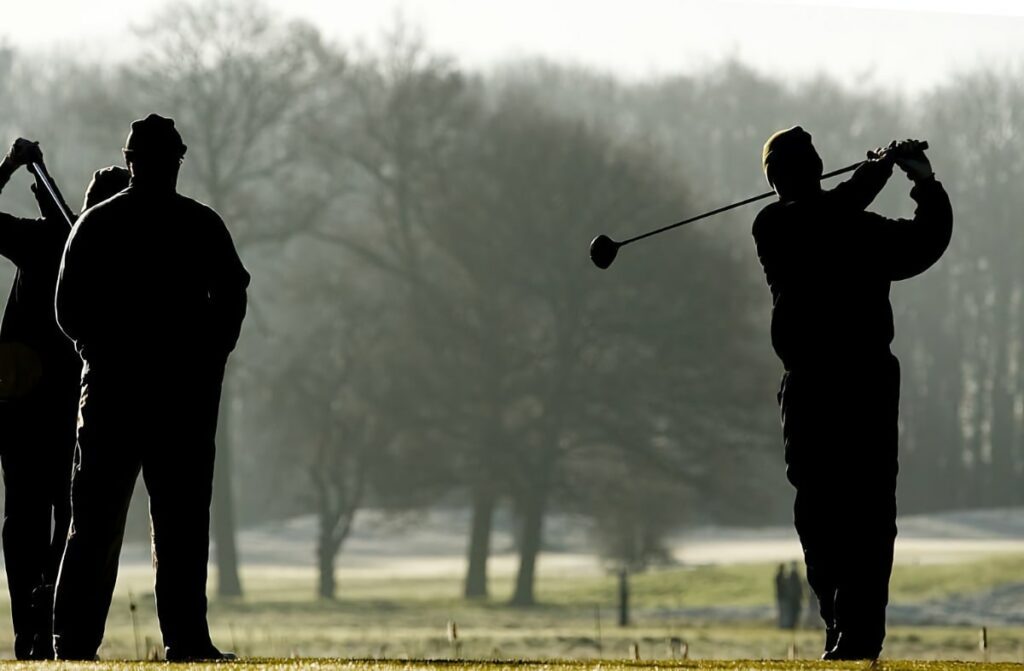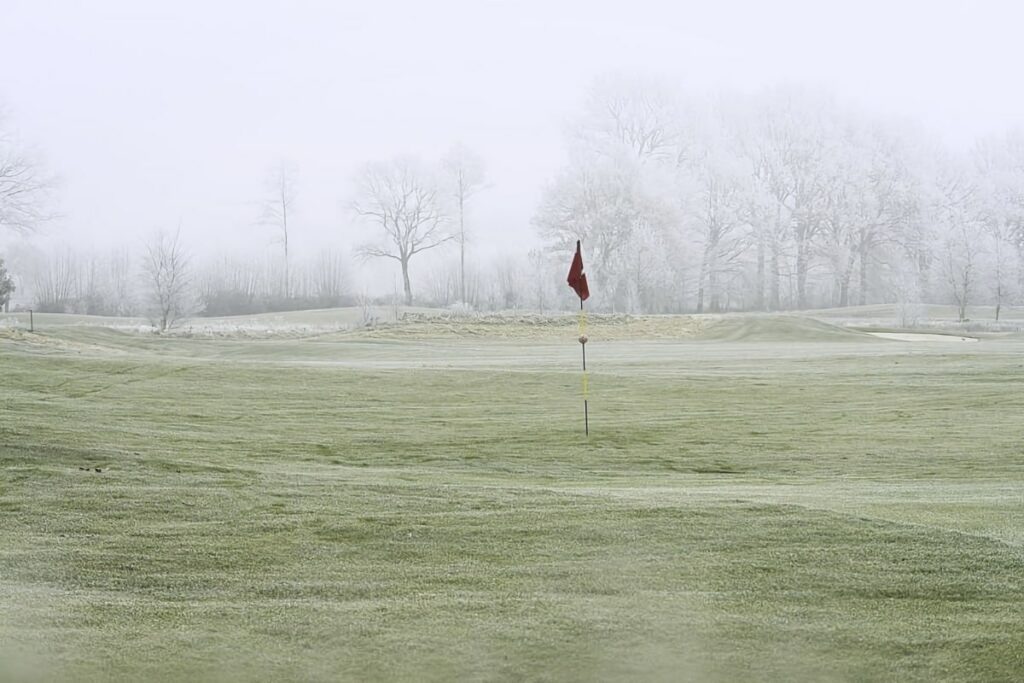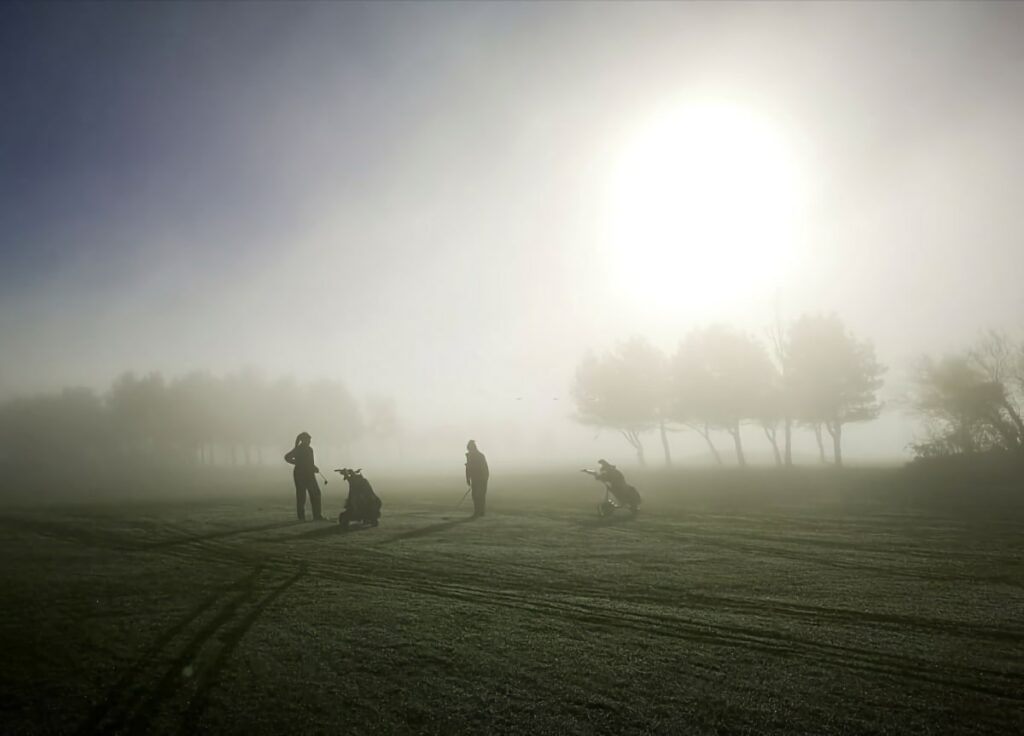When temperatures drop, golfers often wonder “What is too cold to hit driver?”
Frosty conditions bring unique challenges. Frozen balls can damage your clubface, and your shots won’t travel as far — you’ll lose about 2 yards per 10 degrees!
Generally, older titanium drivers can withstand cold weather. But, modern carbon fiber models become fragile at very low temperatures.
That said, with some preparation for the conditions, you can still enjoy the game.
Read on for tips to hit driver in cold weather and optimize your game this winter.
What Is Too Cold to Hit Driver?
It’s too cold to hit driver when golf balls are frozen, as they won’t deform upon impact. This can crack or dent the clubface. The driver material itself also affects performance in colder temperatures. Titanium does not become brittle in low temperatures, while carbon fiber can become fragile when cold.
Can Drivers Crack in Cold Weather?
Many amateur golfers brave the cold and play golf over the winter months.
However, it’s important to know that your driver is at risk of damage when golfing in winter. This comes down to two things: the golf ball, and the driver head.
The Golf Ball
Firstly, let’s talk about the impact of cold temperatures on the golf ball.
Modern golf balls are designed to compress upon impact with the clubface.
In regular temperatures, the force exerted on the ball causes it to deform and then recover back to its original shape shortly after.
However, at very low temperatures golf balls are at risk of freezing. In this state, they will undergo less compression than usual.
The Driver Head
Driver heads are hollow, while irons and wedges have solid metal heads.
This helps to keep the driver lightweight and able to achieve a faster clubhead speed than any other club in the bag.
However, this also means the thin metal face of the driver experiences lots of force when it strikes the ball.
Frozen golf balls can cause the driver face can become cracked or dented, particularly for golfers with a high swing speed.
PRO TIP: To stop your golf balls becoming frozen, store them in a warm place before you start your round. During the round, keep them secure inside your bag and consider changing ball every few holes.

Can Golf Clubs Be Stored in the Cold?
Many golfers store their golf clubs in the back of their cars. However, this isn’t the best place to store your clubs in winter, according to Golf.com.
Cold weather brings moisture, which can cause rubber grips to degrade over time.
While modern golf clubs are manufactured using resin capable of withstanding extreme temperature changes, cold temperatures can damage the epoxy in older clubs. This could potentially cause the bond to break between the clubhead and shaft.
To keep your clubs in their best condition, it’s worth storing them away from the cold. If you have some free space inside your house, keep them there in the harsher winter months.
Are Golf Courses Open in the Winter?
It depends on the type of course and local weather conditions. Many public courses remain open during the winter, provided that the ground is not frozen and that there is no snow cover. Private courses will often close for several months during winter, depending on the severity of the weather.
Most courses will close for at least a short period of time to aerate their greens and undergo other course maintenance work.
If you’re looking to play a course in winter, be sure to contact the club directly to check if they’re open for play.

How Does Temperature Affect Golf Ball Distance?
If you’ve played golf in cold weather, you’ve probably noticed that the ball doesn’t seem to travel as far as it does normally.
This is because cold air is denser, creating more drag resistance against the ball.
Andrew Rice put this to the test, conducting a Trackman test with four different clubs at nine different temperatures:
| Temperature (Fahrenheit) | Driver (yards) | 4-iron (yards) | 7-iron (yards) | PW (yards) |
| 30° | 242.4 | 182.8 | 152.8 | 122.8 |
| 40° | 244.3 | 184.6 | 154.6 | 124.6 |
| 50° | 246.2 | 186.4 | 156.4 | 126.4 |
| 60° | 248.1 | 188.2 | 158.2 | 128.2 |
| 70° | 250 | 190 | 160 | 130 |
| 80° | 251.9 | 191.8 | 161.7 | 131.3 |
| 90° | 253.8 | 193.6 | 163.4 | 132.6 |
| 100° | 255.7 | 195.4 | 165.1 | 133.9 |
| 110° | 257.6 | 197.2 | 166.8 | 135.2 |
The results found that golfers who hit their drives around 250 yards will lose 2 yards of distance for every 10-degree temperature drop.
So, your typical driver ball speed will translate to shorter distances in the cold.
However, the drop in distance is less noticeable for shorter clubs. With the pitching wedge, you’ll only lose about 1.3 yards for every 10-degree temperature decrease.
How to Keep Hands Warm While Golfing
It’s not all about how the club or the ball performs in cold weather. Perhaps more importantly, you have to keep your body warm in order to play good shots.
Using fleece-lined hand mitts or a hand-warming pouch is an effective way to warm your hands up between shots, keeping your focus on the game and not the weather.
Warm hands make winter golf much more bearable!
Nevertheless, it might feel too cold to hit the driver sometimes. Instead, opt for a shorter club that you feel confident hitting the fairway with.

Conclusion
In summary, many golfers will get through winter golf without suffering any damage to their driver, or any of the clubs in their bag.
However, you should avoid using frozen golf balls. These can dent or crack the driver’s face, as frozen golf balls are harder and undergo less compression.
If you’re concerned about using frozen golf balls with your driver at the range, try working on your irons and wedges instead. These are more durable and can withstand harder balls.
Nevertheless, wrap up warm and enjoy the cold weather golf!


